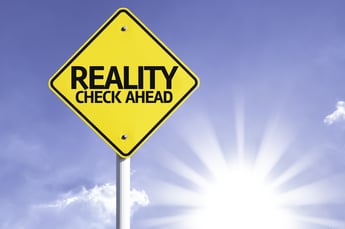
Today, the mere mention of a fax machine often leads to a chuckle. Remember the horrible grating sounds the machine made while pushing out documents printed on flimsy, filmy facsimile paper? This bygone technology was actually used to transmit documents and has all but been replaced by email. In fact, The Smithsonian Museum in Washington, D.C. has entered a fax machine as part of its historical artifacts exhibit. True Story.
While most of us feel that the fax machine has gone the way of the VCR (wow - we are really dating ourselves with this post), in reality there are still industries that require documents to be transmitted via fax. Heavily regulated industries such as healthcare, government and law firms still require documents to be sent this way. The fact that these archaic standards still persist can be attributed partly to the rise of cyber-crime but also to the continuing requirements for a genuine signature. While document transfer technology is progressing along with industry standards, some of these sectors like the Internal Revenue Service may never completely do away with the fax.
Fun Factoid: The characteristic set of tones and noises that initially occur when a fax machine first answers is the exchange protocol used to negotiate speed and exchange identification etc. Similar to old dial-up modems, fax machines use FSK ( Frequency-shift keying ) to transmit data over a standard voice phone line, using a set of fixed buzzes to represent the zero and one of binary data.
The Alternative to Fax
Today E-fax or Internet Fax is becoming a more recognized alternative to regular faxing. E-fax is an inexpensive, subscription-based service that allows the subscriber to send and receive faxes over the internet. The subscriber is given a fax number that will accept faxes from a regular fax machine over a voice line but the data is received first by the E-fax service and transmitted via email to the subscriber. From the other side, the subscriber creates an email using the receiving party's fax number plus an e-fax domain such as @efaxsend.com, attaches the document (PDF) and sends the email. The email is received by the E-Fax service and the information is sent to an actual fax machine as a regular fax. This all happens in less time than an actual fax being sent.
The cost for E-Fax is around $16.95 per month which is substantially less than a $45 to $55 fax line purchased from your local carrier. You can use your existing fax number but you will be required to port/transfer that number to the E-Fax service. You can always port the number back should you decide to change service providers or go back to traditional faxing.
Word of Advice: If you accept an E-Fax assigned fax number rather than use your existing fax number make sure to purchase that number so that you retain ownership should you decide to change services or move back to traditional fax.
In the End
Traditional fax machines, at least for the short term, may survive. Lingering standards and specialty needs of the certain industries will continue to keep the old technology in play. The role of E-fax is continuing to expand and is fast becoming the new standard. When you consider the efficiencies both in time and money that E-fax provides, plus the ongoing shift away from regular phone lines, the end will eventually come for the good old fax machine.



 Unetek
Unetek 